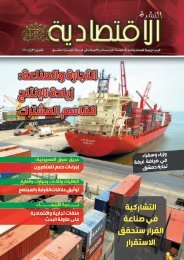SIGAR
2017-01-30qr
2017-01-30qr
You also want an ePaper? Increase the reach of your titles
YUMPU automatically turns print PDFs into web optimized ePapers that Google loves.
COUNTERNARCOTICS<br />
and eastern regions. Despite the increased number of interdictions and<br />
seizures, the results had little effect on the country’s opium production,<br />
which increased to 4,800 tons in 2016—a 43% increase from 2015. UNODC<br />
estimates its total farmgate value at $900 million, a 57% increase from the<br />
2015’s $570 million estimate for 3,300 tons. 779<br />
U.S. RECONSTRUCTION FUNDING<br />
FOR COUNTERNARCOTICS<br />
As of December 31, 2016, the United States has provided $8.5 billion<br />
for counternarcotics efforts in Afghanistan since 2002. Nonetheless,<br />
Afghanistan remains the world’s leading producer of opium, providing<br />
80% of the global output over the past decade, according to the<br />
United Nations. 780<br />
The country also has a growing domestic addiction problem and one of<br />
the highest substance abuse-rates in the world. The 2012 National Urban<br />
Drug Use Survey and 2014 National Rural Drug Use Survey estimate that<br />
11% of the adult population (2.5–3 million Afghans) use drugs, compared<br />
with the 0.3% global average. 781<br />
Congress appropriated most counternarcotics (CN) funds for<br />
Afghanistan through the DOD Drug Interdiction and Counter-Drug<br />
Activities (DOD CN) Fund ($3 billion), the Afghan Security Forces Fund<br />
(ASFF) ($1.3 billion), the Economic Support Fund (ESF) ($1.6 billion),<br />
and a portion of the State Department’s International Narcotics Control<br />
and Law Enforcement (INCLE) account ($2.2 billion). ASFF is primarily<br />
used to develop the Afghan National Army and Police, including the<br />
Counternarcotics Police and Special Mission Wing who support the efforts<br />
of the Ministries of Defense (MOD) and Interior (MOI) to address the<br />
narcotics trade. 782<br />
USAID’s alternative-development programs are intended to support<br />
U.S. counternarcotics objectives by helping countries develop economic<br />
alternatives to narcotics production. In addition to reconstruction funding,<br />
the DEA receives funds through direct appropriations to operate in<br />
Afghanistan. See Appendix B for additional funding information. 783<br />
<strong>SIGAR</strong> will issue a Lessons Learned Program report later this year that<br />
will examine counternarcotics efforts since the U.S. reconstruction began.<br />
This comprehensive review will incorporate satellite-imagery data analysis<br />
and provide recommendations to policymakers to improve future strategies<br />
and programs.<br />
Opium Cultivation on the Rise, Eradication Results Negligible<br />
UNODC issued its latest opium survey on cultivation and production<br />
in December 2016. The survey said the area of Afghanistan under<br />
186<br />
SPECIAL INSPECTOR GENERAL I AFGHANISTAN RECONSTRUCTION







